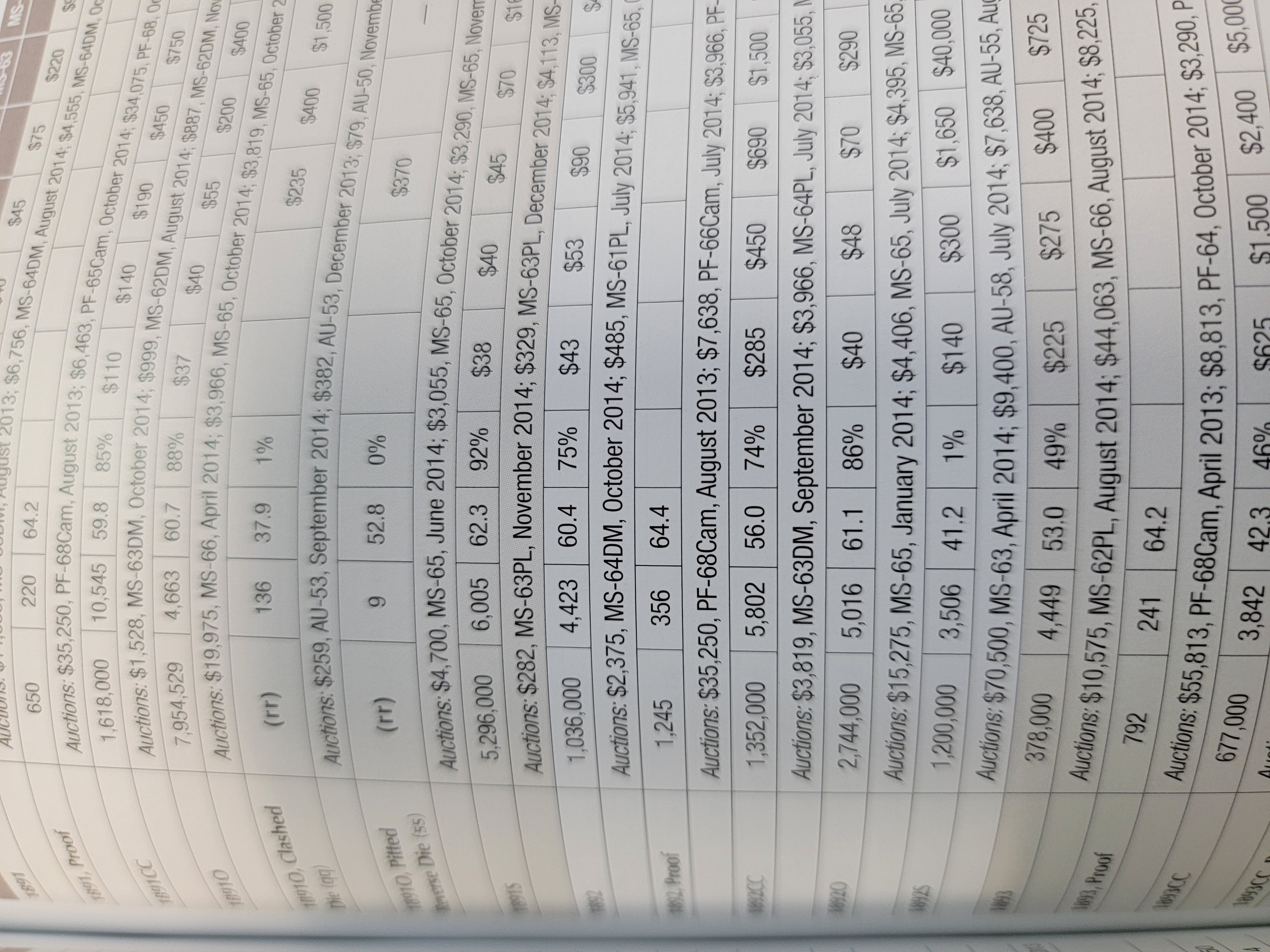
Ok, so you want to publish a “price guide.” How does one do that? Conventional wisdom says that you record actual sales prices of items, and then publish those actual sales amounts in the terms of what those things are worth. Think about the logistics around collecting those sales? Think about all the eBay sales, auction records, and bids received on the big boards. How does one get all that information into a database in any way to reflect actual pricing? The answer is, it only works if you are into averages. What price guides do not tell you is how far away from average you should price a coin you are attempting to buy or sell that is right in front of you.
Have I lost you yet? Let me give you an example. Take an 1882-S PCGS MS66 Morgan Silver Dollar. This is a great type of collector coin. A beautiful coin to get in high grade that is somewhat affordable. Most are struck well and have brilliant white surfaces. The coin is listed in the most recent Grey Sheet @ $325. A quick search on eBay shows NO COINS in that price range, with the least expensive one being listed for ~$450 and the most expensive being listed at $641. How do we explain such a big difference between the guide and the actual market?
For one, price guides are developed over time. And with that means is there has to be a way to “keep the data fresh,” and that begs the question how far back do you go when establishing an average price? How many of you think that a price guide uses only the previous month's sales data to establish its values? And even if they did, can you statistically (with relevance) base a value on just a few transactions a month? Remember, these are RARE coins, and with the exception of widgets, may not always sell in a given month. What do you do then? How far back can you go and still have some semblance of real value?
Another challenge is with the actual coins themselves. I have seen MS66’s that are ugly, and others that are so pristine you cannot understand why it is not an MS66+ or MS67. The price guide price is the same for both of those coins. The same price guide price for the ugly one and the PQ piece. That is the part that never makes it into the price guide. Not that anyone is trying to do anything funny, but there is no way to quantify eye appeal.
I have had people walk away from my table because my prices are higher than “sheet.” Collectors who collect based on price guides and how they can buy coins at value, instead of for eye-appeal, are missing the point, or are wanna-be-coin dealers. Imagine you see a stellar MS66 1882-S that is priced at $500. You check the price guide, see it sells for $325 according to the sheet, and conclude the coin is too expensive. You wind up walking the floor and find several more for less, but none as nice or cheaper. So, you tell yourself “I'll wait for the right coin to come along” and decide not to buy anything at all that day. What I am saying is the price guide has actually done a disservice to your collecting. You are basing your collecting more on what is written on paper than the ACTUAL market that is in front of you. While there are many kinds of collectors, and I have to admit that collecting based on price will get you a collection. The problem is, while you are out there shopping price, all the good coins are getting bought up, and that thing you call a collection is really nothing but “well” priced coins. There are no shortcuts in this hobby. The coins you smile at the most when selling, are almost always the ones that hurt the most buying.
